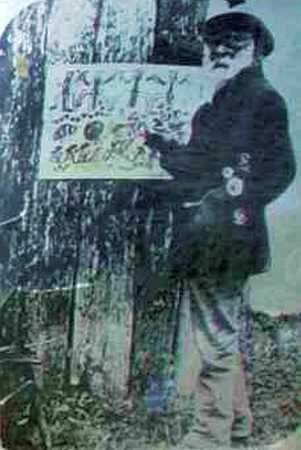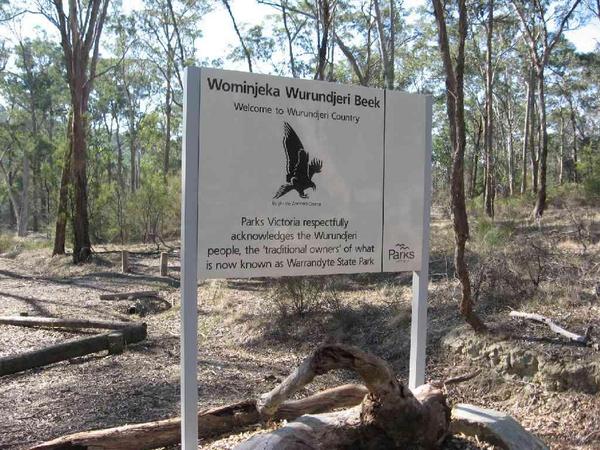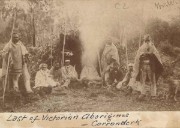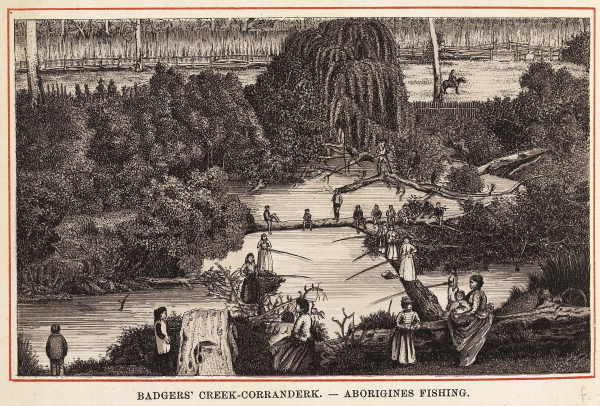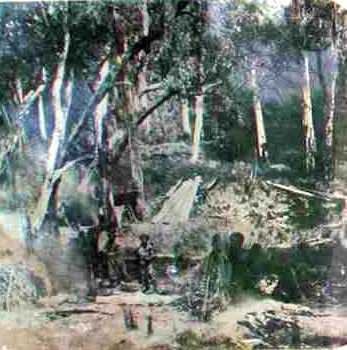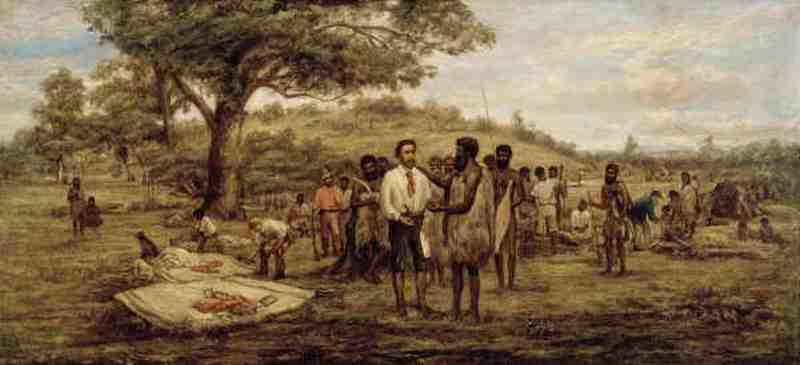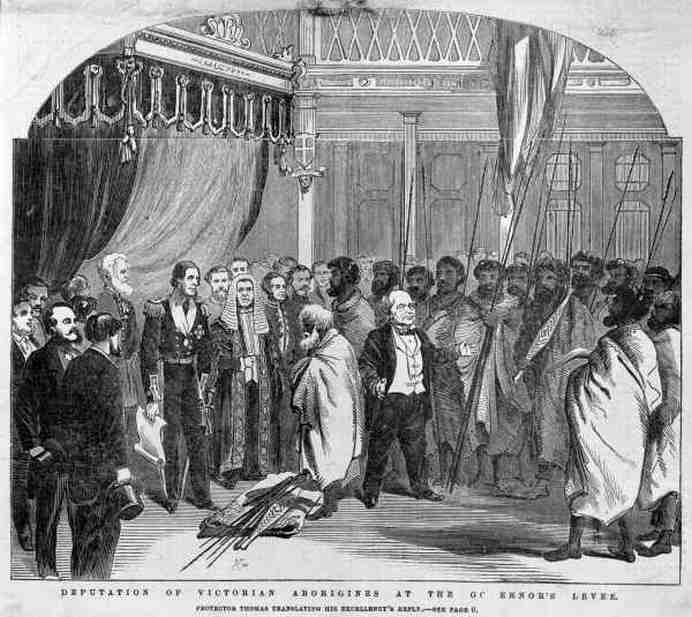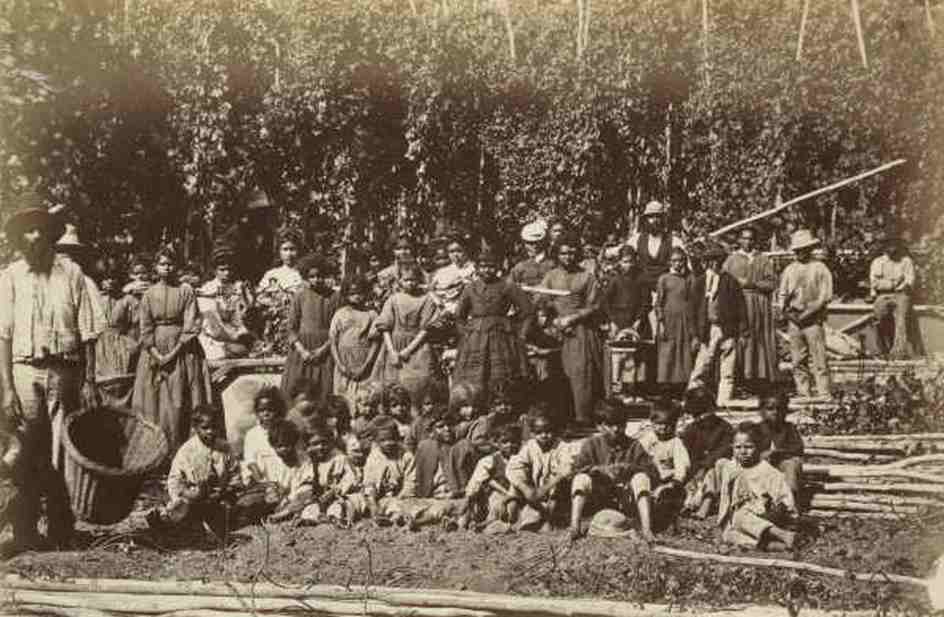Indigenous Heritage
Warrandyte and the State Park are within the ‘traditional’ lands
of several Wurundjeri Clans of the Woiwurung language-speaking group.
As early as 1837, livestock stations ("runs") had been established in
the area we now know as Warrandyte. The first land surveys were in 1839
and 1841, and land was divided into parcels.
The Park is also listed as a place having associations with congregations of people, burials and links to significant people.
As European settlement intensified in the 1840s, land across Victoria was taken over for water supplies, housing, grazing of hard-hoofed animals and fencing.
This meant that the Wurundjeri people were unable to move across ancestral lands, visit sacred places, hunt or gather food.
By 1850, the Aborginal population had been reduced to about a third of its original size. Many were murdered, starved, or died from white people's diseases as they were debied access to their traditional land.
A Reserve for the Wurundjeri people of about 650 hectares was established at Pound Bend in 1852. However, Aboriginal society at the reserve disintegrated rapidly, and the reserve was soon abandoned.
The surviving Aboriginal Community was moved to a new Reserve (Corranderk), near Healesville, in 1854.
The Pound Bend land was subseqeuently made available for purchase by
white people. Initially, it became a cattle pound in the 1860s, hence
the origin of the modern name.
The confluence of Brushy Creek and the Yarra River
(Birrarrung), near Mount Lofty, is said to be the birthplace of William Barak.
William Barak, a prominent Wurundjeri elder, as a child
witnessed the signing of the treaty between elders of his tribe and John
Batman. He passed away at Healesville in 1903.
Although there has been no systematic archaeological
survey completed for the park, six Aboriginal sites within the park are formally
recorded on the Aboriginal Affairs Victoria Register (five scatters and one
scar tree).
All Aboriginal places, objects
and relics in Victoria are protected under the Aboriginal and Torres Strait
Islander Heritage Protection Act 1984 (Cwlth) and the Archaeological and
Aboriginal Relics Preservation Act 1972 (Vic.).
Issues relating to the protection of sites and the
involvement of local Indigenous communities are approached in accordance with
the legislation. Parks Victoria works with the Wurundjeri Tribe Land
Compensation and Cultural Heritage Council and Aboriginal Affairs Victoria
regarding Aboriginal site identification, monitoring, protection and assessment
and in other aspects of park management.
FootballBefore, and how long before we have no way of knowing, the arrival in
1838 of James Anderson, the first European to establish a cattle and
sheep property in the district, there existed a tract of land cleared by
the Wurundjeri people, which was situated close to the confluence of
the Yarra River and Anderson’s Creek. This was adjacent to, or
encompassing, today's Warrandyte Recreation Reserve and it was here that
the Wurundjeri and their competitors from other clans played their
brand of football, variously known as marn-grook or mangrut.
It was here, on festive occasions, that the local Aborigines held their
corroborees and in the early 1850’s during a lull in mining activity
between the first discovery in 1851 and the second goldrush from
1854-56, that Templestowe pioneer Tom Chivers was given the rare
opportunity, as a young child, to observe such a ceremony. It was an
auspicious event that lasted about a fortnight and included football
(mangrut).
According to noted local historian Murray Houghton, the Aboriginal game
is best described in the book Australian Aborigines, published in 1881
by James Anderson's neighbour James Dawson, who wrote:
"One of the favourite games is football, in which 50 or as many as 100
players engage at a time. The ball is about the size of an orange and is
made of opossum skin, with the fur side outwards. It is filled with
powdered charcoal, which gives solidarity without much increase of
weight, and is tied hard around with kangaroo tail sinews. The players
are divided into two sides and ranged in opposing lines which are always
of a different 'class', white cockatoo against black cockatoo, quail
against snake etc.”
"Each side endeavours to keep possession of the ball, which is tossed a
short distance by hand and then kicked in any direction. The side which
kicks it oftenest and furtherest gains the game. The person who kicks it
highest is considered the best player and given the honour of burying
it in the ground until required next day.”
"The sport is concluded with a shout of applause and the best player is
complimented on his skill. This game, which is similar to the white
man's game of football, is very rough, but as the players are barefoot
and naked, they do not hurt each other so much as the white people; nor
is the fact of an Aborigine being a good football player considered to
entitle him to assist in making laws for the tribe to which he belongs."
(Source: Warrandyte Football Club Website)
Indigenous Heritage Images
